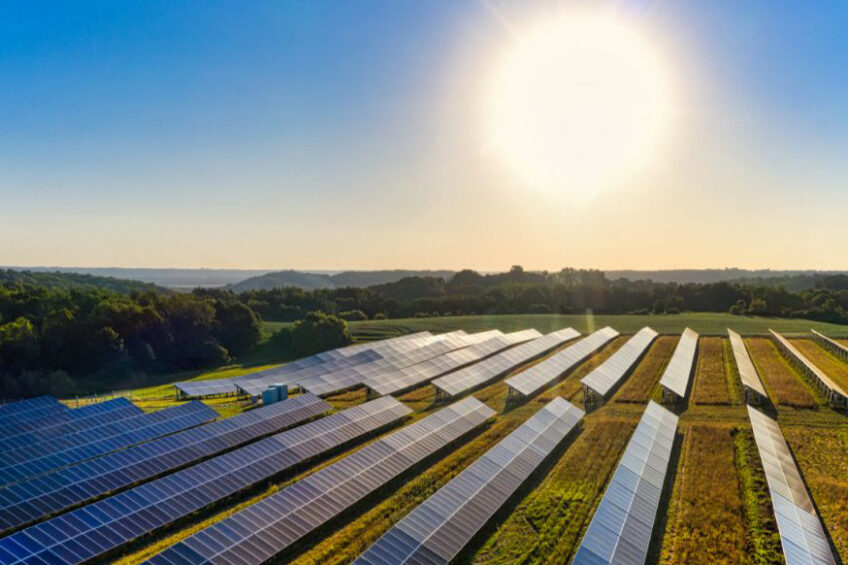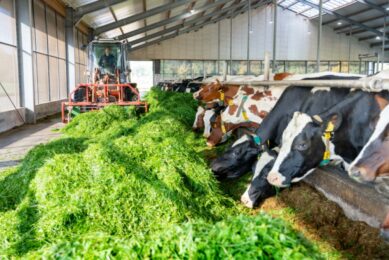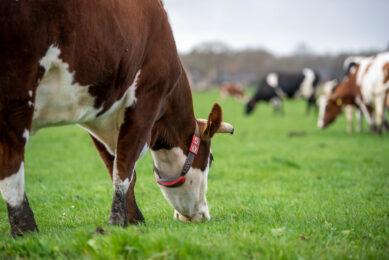Solar situation on European dairy farms

The number of dairy farms turning to some form of solar generation is growing across Europe, and with new research projects looking at long-standing issues hampering the use of photovoltaic (PV) solutions on agricultural land, this trend is likely to gain momentum. However, the investment landscape remains uneven across the region. We take a look.
In May 2023, Swyft Energy, installer of solar solutions in Ireland, forged a partnership with Kerry Agribusiness. This collaboration led to the installation of a PV system at the facilities of Kerry Agribusiness’ milk supplier, PJ O’Halloran. The farm’s owners, who had been considering solar power for a while, were motivated by a 53% increase in energy bills since 2021. The installation of solar panels proved to be a game-changer for them.
The introduction of solar generation was projected to reduce the dairy farm’s electricity costs by a significant 57%. This promising figure not only indicated a swift return on investments, but also opened up a new avenue for dairy farm owners to significantly reduce their operational costs, a prospect that surely piqued the interest of many.
This is a very common story. In the last 2 years, a significant number of European agricultural businesses have turned to solar power. The peak interest in PV technologies among farmers was likely seen in 2022, when the conflict in Ukraine squeezed the energy market, driving prices to historic highs.
“The enormous increase in electricity and natural gas prices motivated consumers to assess their consumption patterns and search for solutions to reduce energy costs. The installation of own energy generation capacities is one of the solutions,” Anna Rozīte, head of Business Development at Latvian energy company AJ Power Group.
Rozīte added that solar power is the easiest and fastest way of establishing independent power-generating capacities, which largely explains its rising popularity over the past few years.
Solar energy on dairy farms in the EU
However, the trend of expanding the popularity of solar power among dairy farms is perhaps more complicated than it appears. “It goes without saying that the roofs of the buildings on dairy farms basically across our Union are close to perfect for setting PV installations,” commented Alexander Anton, secretary general of the European Dairy Association.
However, Anton emphasised that public support across the EU is rather uneven and differs from one member state to another. As the public support landscape largely determines the investment landscape, this basically means that in some countries, establishing solar power capacities at dairy farms is more attractive than in others.
“Historically, the support of renewable energy was highest in Germany, where the introduction of the Renewable Energy Law back in 2000 had led to a situation where ‘you don’t need a pencil to make a calculation for your investment – the win situation is obvious’, and within a few years roofs of agricultural buildings switched from red to black,” Anton recalled.
However, Anton admitted that other EU member states took a different approach and did not support renewables to the same extent.
In the Netherlands, the Dutch Dairy Association (NZO) and processors stimulated the production of solar power via the Duurzame Zuivelketen (Sustainable Dairy Value Chain), Kringloopwijzer, and sustainability programmes of individual dairy companies, commented Richard Schepper, a dairy analyst with Rabobank.
However, farmers wanting to switch to solar power face numerous hurdles. “The wave of investments in solar panels has stalled among dairy farmers due to the net congestion, policies and the already high implementation rate,” Schepper admitted.
Despite that, he indicated that historic subsidies and policies have been attractive for dairy farmers as they have a large quantity of square metres of roof area.
Shedding light on new opportunities
Rooftop solar panels are not the only available solutions for dairy farmers to incorporate PV technologies into their businesses. Solar panels could also be effectively installed on agricultural land. But, as Anton stated, large-scale PV installations on agricultural land by energy providers or other investors tend to increase the competition for land.
“In the Netherlands, the land use efficiency is an important reason to consider agri-PV [integration of conventional agriculture and solar power generation],” commented Kay Cesar, project manager at SolarMilk, a Dutch project focusing on the integration of ground-mounted solar systems in dairy farming.
The project relies on the realisation of 4 test fields with varying configurations and shading to study the effect of ground irradiance on grass growth and quality. Cesar said that interest comes from both the agricultural and PV sectors.
“When focusing on the Netherlands, especially the project developers of traditional solar parks are interested in the development as the government adopted a new policy to restrict the development of solar parks on land with agri-PV and a few other exceptions,” Cesar said.
According to Cesar, the agricultural association opposes mono-functional solar parks, which are incompatible with serious forms of agriculture other than sheep grazing. However, concepts that demonstrate serious combinations of agricultural activities combined with PV are adopted with quite some enthusiasm, especially when the agricultural sector is in the lead.
“The challenge is that it is not yet clear what design assures a serious agricultural activity, is acceptable for landscape integration in our flat country and results in a sound business case. It is good to realise that the business case for mono-functional solar parks is better than for the combination with agriculture, which often requires more costly constructions and fewer panels per surface area while the development cost is higher because it is a new field,” Cesar indicated.
Uncertainty
The lack of data creates uncertainty about what real agri-PV should be, Cesar said, explaining that regulations try to guarantee agricultural production, but because of the lack of data, they are complicated and unsuitable for the purpose.
For example, he noted that in Germany, you must give proof that you produce a minimum yield of crops after installation as measured compared to a reference plot. But you cannot make an investment if you are not certain about maintaining the permit.
“On the other hand, to be certain about the crop yield of an agri-PV configuration that results in a healthy agricultural yield, you need many growing seasons with shade varying set-ups to find out how tight you can pack your panels,” Cesar said.
“The worst situation is that we use more land of solar panels as compared to conventional solar parks and that the farmer decides it is not worth the while to get the crops or grass from the lands,” he said.
Market players believe that projects like SolarMilk, which investigates ways to better combine milk farming and solar energy, can be very helpful.
“Integrating the advantages of livestock and livestock-land seems a good approach, as long as the dairy farm is in the pilot’s seat and as long as its primary milk production is not hampered,” Anton stated.
Join 13,000+ subscribers
Subscribe to our newsletter to stay updated about all the need-to-know content in the dairy sector, two times a week.










